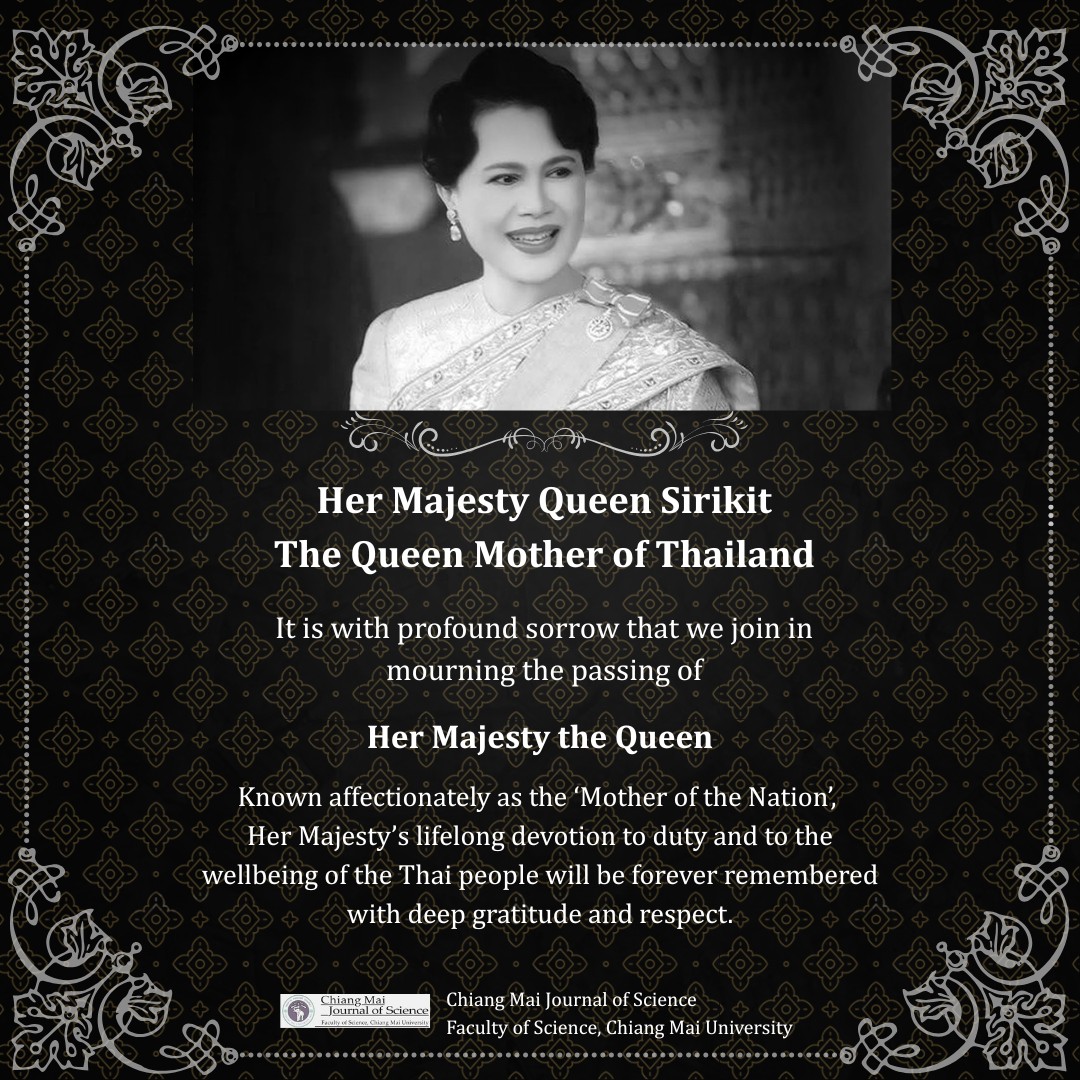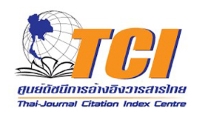JOURNAL DETAIL
Influence of Deep Cryogenic Treatment on Microstructure, Hardness, Impact Strength and Wear of CuBeZr Alloy
Paper Type |
Contributed Paper |
Title |
Influence of Deep Cryogenic Treatment on Microstructure, Hardness, Impact Strength and Wear of CuBeZr Alloy |
Author |
Nuwan Wannaprawat and Karuna Tuchinda |
Email |
karuna.t@tggs.kmutnb.ac.th |
|
Abstract: Effects of deep cryogenic treatment (DCT) on the microstructure, mechanical and wear
properties of copper beryllium alloy (CuBeZr alloy) were studied. The samples were exposed to the DCT
at -196 degrees Celsius (°C) for different soaking time, i.e. 0.5 h, 1 h, 4 h, 8 h, 12 h, 16 h, 24 h, 48 h and
72 h. Microstructural analysis including size, shape and number of precipitates was studied by optical
microscopy (OM) and scanning electron microscopy (SEM). Results showed Ni precipitates and NiZr
precipitates with different shapes (sphere and rod-shaped) in the α matrix. After DCT, the number and
size of Ni and NiZr precipitates increased with longer soaking time, while for samples with long DCT
periods, large precipitates were observed along grain boundaries. The microstructures transformation
in Ni and NiZr precipitates were induced by internal stress developed during DCT process due to
the difference in thermal contraction/expansion of different phases. Highest compressive residual
stress was observed at the longest soaking time (72 h). Change in microstructure altered the material
properties. Hardness and wear resistance were significantly enhanced by the DCT process. Increase
in average hardness with reduction in surface sliding wear was found with increasing DCT period,
with a maximum of 17% increase in hardness and 49% decrease in wear at 72 h soaking time. After
DCT for over 24 h, impact strength measured by the Charpy impact test decreased by approximately
50%. Fractography analysis of the non-DCT and DCT-samples showed dimples, tear ridges and
precipitate cracks on fracture surfaces in all cases showing different failure modes. The fraction area
of each failure type changed with DCT period. Results suggested that major reductions in fracture
resistance were caused by precipitates locating along the grain boundaries. Thermal conductivity was
also examined using laser flash analysis (LFA) to determine whether this property degraded after the
DCT process. Thermal conductivity is a very important property for most applications using copper
beryllium alloy. Tests were performed for non-DCT and DCT samples at 24 and 72 h for temperature
range of 300°C to 600°C. Small differences in thermal conductivity were observed for all cases studied,
with maximum increase of approximately 5% compared with the non-DCT cases after 72 h DCT. |
|
Start & End Page |
631 - 647 |
Received Date |
2020-09-10 |
Revised Date |
|
Accepted Date |
2020-10-26 |
Full Text |
Download |
Keyword |
deep cryogenic treatment, copper beryllium alloy, microstructure, thermal conductivity |
Volume |
Vol.48 No.2 (March 2021) |
DOI |
|
Citation |
Wannaprawat N. and Tuchinda K., Influence of Deep Cryogenic Treatment on Microstructure, Hardness, Impact Strength and Wear of CuBeZr Alloy, Chiang Mai Journal of Science, 2021; 48(2): 631-647. |
| View:1,004 Download:510 | |
RELATED ARTICLE
Phase formations, Compressive Strength and Microstructure of Environmentally Friendly Thai Lopburi Calcined Clay-Limestone Cement Mixes
Article ID: e2024089
Author:Arnon Chaipanich, Nalintip Sansuthum, Phakin Chomyen, Kornnika Wianglor and Supakporn Aodkeng
Vol.51 No.6 (November 2024) View: 1,367 Download:308
Article ID: e2024089
Author:Arnon Chaipanich, Nalintip Sansuthum, Phakin Chomyen, Kornnika Wianglor and Supakporn Aodkeng
Vol.51 No.6 (November 2024) View: 1,367 Download:308
The Effect of Double Solution Treatment on Changes in the Microstructure of Austenitic Manganese Steel
Article ID: e2023060
Author:Arif Tjahjono, Nadya Salsabila Frendyta and Permana Andi Paristiawan
Vol.50 No.6 (November 2023) View: 995 Download:519
Article ID: e2023060
Author:Arif Tjahjono, Nadya Salsabila Frendyta and Permana Andi Paristiawan
Vol.50 No.6 (November 2023) View: 995 Download:519
Microstructure, Tensile, and Fractography Analysis of Al2016 and Al2618 Age Hardened Aluminium Alloys
page: 1217 - 1232
Author:Arivumani Ravanan, Ilamathi Palanivel and Balamurugan Kulendran
Vol.49 No.4 (July 2022) View: 1,638 Download:844
page: 1217 - 1232
Author:Arivumani Ravanan, Ilamathi Palanivel and Balamurugan Kulendran
Vol.49 No.4 (July 2022) View: 1,638 Download:844
Deconvolution of Microstructural Distributions of Ethylene/1- Butene Copolymer Blends using Artificial Neural Network
page: 217 - 222
Author:Piriyakorn Piriyakulkit and Siripon Anantawaraskul
Vol.49 No.1 (Special Issue I : Jan 2022) View: 1,428 Download:482
page: 217 - 222
Author:Piriyakorn Piriyakulkit and Siripon Anantawaraskul
Vol.49 No.1 (Special Issue I : Jan 2022) View: 1,428 Download:482
Fabrication of Open-cell Aluminum Foams by Pressure Infiltration and Salt Leaching Method from Commercial Grade Alloys
page: 673 - 685
Author:Pat Sooksaen* and Pathompong Puathawee
Vol.47 No.4 (Special Issue II : July 2020) View: 992 Download:1,075
page: 673 - 685
Author:Pat Sooksaen* and Pathompong Puathawee
Vol.47 No.4 (Special Issue II : July 2020) View: 992 Download:1,075
Effect of Deep Cryogenic Treatment on the Properties of TiN Coated 316L Stainless Steel
page: 349 - 361
Author:Kessaraporn Wathanyu, Karuna Tuchinda, Sithipong Mahathanabodee and Surasak Surinpong
Vol.47 No.2 (Special Issue I : March 2020) View: 1,358 Download:635
page: 349 - 361
Author:Kessaraporn Wathanyu, Karuna Tuchinda, Sithipong Mahathanabodee and Surasak Surinpong
Vol.47 No.2 (Special Issue I : March 2020) View: 1,358 Download:635
Physical Properties and Microstructure of a Fe-Ni-Co Alloy Prepared by Sintering Metal Powders Under Nitrogen Gas Atmosphere
page: 17 - 25
Author:Sirisak Seansukato and Torranin Chairuangsri*
Vol.31 No.1 (JANUARY 2004) View: 836 Download:273
page: 17 - 25
Author:Sirisak Seansukato and Torranin Chairuangsri*
Vol.31 No.1 (JANUARY 2004) View: 836 Download:273
Influence of Calcium Salts on Quality and Microstructure of Minimally-processed Litchi Fruit
page: 46 - 61
Author:Putkrong Phanumong, Sang Moo Kim, Jurmkwan Sangsuwan, Noppol Leksawasdi and Nithiya Rattanapanone
Vol.46 No.1 (January 2019) View: 897 Download:396
page: 46 - 61
Author:Putkrong Phanumong, Sang Moo Kim, Jurmkwan Sangsuwan, Noppol Leksawasdi and Nithiya Rattanapanone
Vol.46 No.1 (January 2019) View: 897 Download:396
Electrical and Thermal Transport Properties of Dysprosium Barium Copper Oxide Ceramic
page: 2809 - 2816
Author:Paitoon Boonsong, Pimpilai Wannasut, Suwapitcha Buntham, Ampika Rachakom, Chakrit Sriprachuabwong, Adisorn Tuantranont and Anucha Watcharapasorn
Vol.45 NO.7 (November 2018) View: 1,078 Download:455
page: 2809 - 2816
Author:Paitoon Boonsong, Pimpilai Wannasut, Suwapitcha Buntham, Ampika Rachakom, Chakrit Sriprachuabwong, Adisorn Tuantranont and Anucha Watcharapasorn
Vol.45 NO.7 (November 2018) View: 1,078 Download:455
Effects of Cobalt Dopant on Microstructure and Electrical Properties of Bi0.5Na0.5TiO3 Ceramics
page: 2481 - 2490
Author:Suwapitcha Buntham, Paitoon Boonsong, Panupong Jaiban, Nittaya Keawprak and Anucha Watcharapasorn
Vol.45 No.6 (September 2018) View: 880 Download:339
page: 2481 - 2490
Author:Suwapitcha Buntham, Paitoon Boonsong, Panupong Jaiban, Nittaya Keawprak and Anucha Watcharapasorn
Vol.45 No.6 (September 2018) View: 880 Download:339
Microstructure and Wear Behavior of Hardfacing with Ferro-alloy Powder Addition Using Submerged Arc Welding
page: 2034 - 2047
Author:Buntoeng Srikarun and Prapas Muangjunburee*
Vol.45 No.5 (Special 2018) View: 938 Download:518
page: 2034 - 2047
Author:Buntoeng Srikarun and Prapas Muangjunburee*
Vol.45 No.5 (Special 2018) View: 938 Download:518
Fabrication of Porous Ceramics from Non-metallic Residue Obtained from Aluminum Recycling Plant
page: 1099 - 1110
Author:Pat Sooksaen* and Pathompong Puathawee
Vol.45 No.2 (March 2018) View: 958 Download:312
page: 1099 - 1110
Author:Pat Sooksaen* and Pathompong Puathawee
Vol.45 No.2 (March 2018) View: 958 Download:312
Characteristics and Flavor Retention of Structured Emulsion from Pomelo (Citrus maxima) Residue
page: 949 - 960
Author:Yot Boontongkong, Jaruwan Yaemsiri and Pawadee Methacanon*
Vol.45 No.2 (March 2018) View: 932 Download:419
page: 949 - 960
Author:Yot Boontongkong, Jaruwan Yaemsiri and Pawadee Methacanon*
Vol.45 No.2 (March 2018) View: 932 Download:419
Effect of Nano-silica Addition on the Mechanical Properties and Thermal Conductivity of Cement Composites
page: 1159 - 1169
Author:Pongsak Jittabut [a], Supree Pinitsoontorn* [b], Prasit Thongbai [b], Vittaya Amornkitbamrung [b] and Prinya Chindaprasirt [c]
Vol.43 No.5 (OCTOBER 2016) View: 1,016 Download:591
page: 1159 - 1169
Author:Pongsak Jittabut [a], Supree Pinitsoontorn* [b], Prasit Thongbai [b], Vittaya Amornkitbamrung [b] and Prinya Chindaprasirt [c]
Vol.43 No.5 (OCTOBER 2016) View: 1,016 Download:591
Effect of Heat Treatment on High Temperature Damping Capacity of ZK60 Sheet Produced by Twin-roll Casting and hot-rolling
page: 351 - 357
Author:Chen Hongmei* [a], Liu Zhongming [a], Zang Qianhao [a, b], Yu Xin [a], Zhang Jing [c] and Jin Yunxue [a]
Vol.43 No.2 (SPECIAL ISSUE 1) View: 870 Download:269
page: 351 - 357
Author:Chen Hongmei* [a], Liu Zhongming [a], Zang Qianhao [a, b], Yu Xin [a], Zhang Jing [c] and Jin Yunxue [a]
Vol.43 No.2 (SPECIAL ISSUE 1) View: 870 Download:269
Microstructure and Mechanical Properties of As-cast and Heat-treated 935AgCuBeSn Alloys
page: 206 - 214
Author:Siriwan Sakultanchareonchai [a], Torranin Chairuangsri [b] and Ekasit Nisaratanaporn*[a]
Vol.43 No.1 (JANUARY 2016) View: 905 Download:435
page: 206 - 214
Author:Siriwan Sakultanchareonchai [a], Torranin Chairuangsri [b] and Ekasit Nisaratanaporn*[a]
Vol.43 No.1 (JANUARY 2016) View: 905 Download:435
Effect of Isothermal Heat Treatment at 650, 750 and 850°C on the Microstructures of Lean Duplex Stainless Steel S32101 Welds
page: 874 - 885
Author:Zbigniew Brytan* and Jerzy Niagaj
Vol.40 No.5 SPECIAL ISSUE 1 View: 857 Download:252
page: 874 - 885
Author:Zbigniew Brytan* and Jerzy Niagaj
Vol.40 No.5 SPECIAL ISSUE 1 View: 857 Download:252
Characteristics of Microstructure, Microhardness, and Oxidation of FSW and MIG Welded Steels
page: 831 - 838
Author:Seul Ki Kim, Seung Boo Jung and Dong Bok Lee*
Vol.40 No.5 SPECIAL ISSUE 1 View: 830 Download:278
page: 831 - 838
Author:Seul Ki Kim, Seung Boo Jung and Dong Bok Lee*
Vol.40 No.5 SPECIAL ISSUE 1 View: 830 Download:278
Microstructures in Pyrope Garnets from Thailand
page: 669 - 677
Author:Bongkot Phichaikamjornwut, Henrik Skogby, Prayote Ounchanum, Phisit Limtrakun and Apichet Boonsoong
Vol.39 No.4 (OCTOBER 2012) View: 790 Download:300
page: 669 - 677
Author:Bongkot Phichaikamjornwut, Henrik Skogby, Prayote Ounchanum, Phisit Limtrakun and Apichet Boonsoong
Vol.39 No.4 (OCTOBER 2012) View: 790 Download:300
Effect of carburizing via current heating technique on the near-surface microstructure of AISI 1020 steel
page: 254 - 262
Author:Chatdanai Boonruang*a, Wareelak Kumpangkeawa, Kittichai Sopunnab, Natthaphol Chomsaengc, Suparut Nar
Vol.39 No.2 (APRIL 2012) View: 938 Download:250
page: 254 - 262
Author:Chatdanai Boonruang*a, Wareelak Kumpangkeawa, Kittichai Sopunnab, Natthaphol Chomsaengc, Suparut Nar
Vol.39 No.2 (APRIL 2012) View: 938 Download:250
Effects of Al2O3 Nano-Particulates Addition on
Barium Titanate Ceramics
page: 175 - 182
Author:Sukanda Jiansirisomboon*, Anucha Watcharapasorn and Tawee Tunkasiri
Vol.33 No.2 (MAY 2006) View: 902 Download:222
page: 175 - 182
Author:Sukanda Jiansirisomboon*, Anucha Watcharapasorn and Tawee Tunkasiri
Vol.33 No.2 (MAY 2006) View: 902 Download:222
Microstructures and Mechanical Properties of
Zirconium-Doped Bismuth Sodium Titanate
Ceramics
page: 169 - 173
Author:Anucha Watcharapasorn*, Sukanda Jiansirisomboon and Tawee Tunkasiri
Vol.33 No.2 (MAY 2006) View: 871 Download:219
page: 169 - 173
Author:Anucha Watcharapasorn*, Sukanda Jiansirisomboon and Tawee Tunkasiri
Vol.33 No.2 (MAY 2006) View: 871 Download:219
A Novel Method to Produce Silver Foams with Multilevel
Porosities
page: 296 - 301
Author:Seksak Asavavisithchai, Ekasit Nisaratanaporn, and Yuttanant Boonyongmaneerat
Vol.36 No.3 (SEPTEMBER 2009) View: 890 Download:225
page: 296 - 301
Author:Seksak Asavavisithchai, Ekasit Nisaratanaporn, and Yuttanant Boonyongmaneerat
Vol.36 No.3 (SEPTEMBER 2009) View: 890 Download:225
Effects of Beryllium on Microstructure and Resiliency of Silver-Copper Alloy
page: 260 - 268
Author:Torranin Chairuangsri, and Ekasit Nisaratanaporn
Vol.37 No.2 (MAY 2010) View: 934 Download:280
page: 260 - 268
Author:Torranin Chairuangsri, and Ekasit Nisaratanaporn
Vol.37 No.2 (MAY 2010) View: 934 Download:280
Copyrights © Since 2021 All Rights Reserved by Chiang Mai Journal of Science










